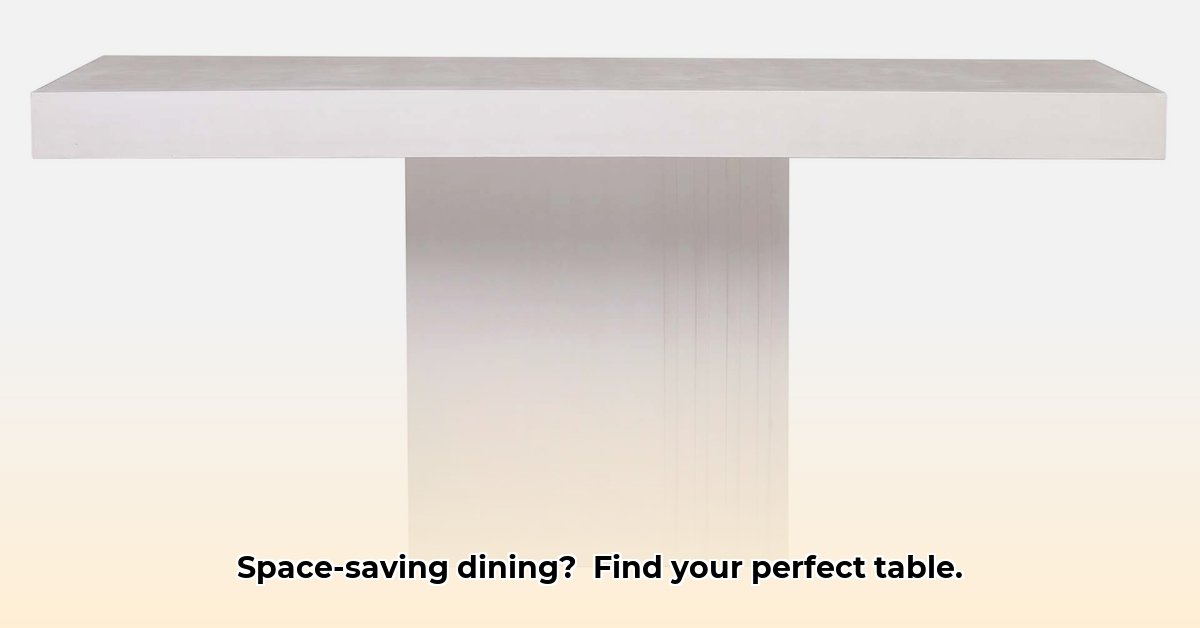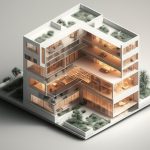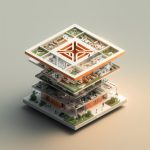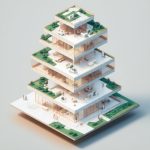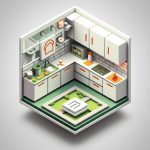Need a dining table that doesn’t hog all the space but still looks amazing? Rectangular pedestal dining tables are the answer! They’re surprisingly versatile and come in tons of styles. This guide will help you find the perfect one for your home, covering everything from the materials and looks to the size, care, and even styling tips. We’ll make sure you understand the pros and cons of different types, help you choose a size that fits your family, and give you inspiration for creating a stunning dining space. For even more space-saving options, check out these drop leaf tables. Let’s find your dream dining table together!
Rectangular Pedestal Dining Tables: A Space-Saving and Stylish Solution
Finding the perfect dining table can feel like searching for a needle in a haystack. Rectangular pedestal dining tables stand out as a stylish, space-saving, and versatile option. But what makes them so desirable, and how do you choose the ideal one that complements your lifestyle and home?
Material Magic: Unveiling the Essence of Your Rectangular Table
The material you select for your rectangular pedestal table significantly influences its aesthetic appeal, durability, and overall feel. Let’s explore some popular choices and understand their unique characteristics.
- Solid Wood: This classic option provides unbeatable durability and a timeless elegance. Rich oak offers durability and a prominent grain, warm walnut brings a sophisticated dark tone, and sophisticated maple provides a lighter, more subtle grain. Solid wood tables may require more maintenance through periodic cleaning and polishing.
- Engineered Wood: A budget-friendly alternative. Engineered wood combines different wood layers (often MDF or plywood) with a laminate or veneer surface to create a stable and visually appealing surface. It often mimics the look of solid wood, making it an excellent choice if you’re on a tighter budget. While generally less durable than solid wood, it’s still sturdy and easier to maintain. Look for engineered wood with a durable laminate to resist scratches and water damage.
- Metal: Metal bases, often steel or iron, add a modern or industrial touch, often paired with wood, sintered stone, or glass tops. Powder-coated finishes increase durability and prevent rust. Metal tables generally need less maintenance than wood but can be susceptible to scratches.
- Sintered Stone: This material combines natural stone particles pressed and heated to create an incredibly durable, non-porous surface. Sintered stone is heat, scratch, and stain-resistant, making it ideal for dining tables. It often mimics marble or other natural stone patterns.
- Glass: Offers a sleek, modern look, especially when paired with a metal pedestal base. Tempered glass is a must for safety. Glass is easy to clean but can show fingerprints and requires more careful handling to avoid chips and scratches.
The best material truly depends on your personal style preferences, budget constraints, lifestyle, and commitment to long-term maintenance.
Design Styles: Harmonizing Your Table with Existing Décor
A rectangular pedestal table’s adaptability allows it to fit seamlessly into various dining room design schemes. Let’s explore some popular styles and how they complement different interiors.
- Modern Minimalism: This style embraces clean lines, sleek materials (like metal, glass, and sintered stone), and focuses on simplicity with polished surfaces and a minimalist color palette. Think simple, geometric shapes and monochrome colors.
- Rustic Charm: These tables embrace natural beauty with visible wood grain, distressed finishes, and possibly reclaimed wood, creating a lived-in, cozy feel. Pair it with woven textures and warm, earthy tones.
- Mid-Century Modern: Balancing sleek lines with organic shapes, this style features tapered legs, a subtle retro flair, and a focus on functionality. Look for walnut wood and clean, simple silhouettes.
- Farmhouse Flair: This style features chunky wood, simple designs, and a relaxed, comfortable aesthetic, exuding warmth and casual elegance. Shiplap walls and vintage accessories enhance the farmhouse charm.
- Industrial Chic: Combines the rawness of metal with the warmth of wood. Look for tables with metal pedestal bases and reclaimed wood tops. Exposed brick and Edison bulb lighting complete the look.
- Glam: For a touch of luxury, opt for a table with a glossy finish, metallic accents, and plush seating. Think white sintered stone tops with gold stainless steel pedestal bases.
Consider your current home décor and the overall atmosphere you want to create. Do you envision a minimalist modern space or something more rustic and warm? The table should complement your existing furniture, color palette, and personal style.
Seating Capacity: Optimizing Dining Space for Comfortable Gatherings
Choosing the right size is crucial. You need enough room for family and guests without overwhelming your dining area.
| Table Dimensions (Approximate) | Seating Capacity | Room Size Recommendation (Minimum) | Notes |
|---|---|---|---|
| 48″ x 30″ | 4 | 8′ x 8′ | Perfect for smaller spaces, intimate dinners, apartments |
| 60″ x 36″ | 6 | 10′ x 10′ | Ideal for families or regular dinner parties |
| 72″ x 42″ | 8 | 12′ x 12′ | Great for larger families and entertaining |
| 96″ x 48″ | 10+ | 14′ x 14′ | Perfect for large families and larger gatherings |
Remember, these are just estimates. The actual seating capacity can vary depending on the size and style of chairs. Always leave enough space (at least 36 inches) for comfortable movement around the table. Consider extendable tables for flexibility.
Pedestal Base Considerations: Single vs. Double
- Single Pedestal: Offers more legroom and a cleaner look, especially for smaller tables.
- Double Pedestal: Provides more stability for larger tables and can accommodate more weight.
Consider the size of your table and the number of people you typically seat when choosing between a single or double pedestal base.
Your Step-by-Step Guide to Selecting the Perfect Rectangular Pedestal Table
Finding your dream rectangular pedestal table is easier when you follow these simple steps:
- Measure Your Space: Carefully measure your dining area with a measuring tape, considering available space for comfortable seating and movement (allow at least 36 inches around the table). Note the room’s dimensions and draw a simple floor plan.
- Set Your Budget: Determine how much you’re willing to spend to narrow your search and avoid buyer’s remorse. Prices can range from a few hundred dollars for engineered wood to several thousand for solid wood or stone.
- Define Your Style: Browse images online (Pinterest, Houzz, Wayfair) or in magazines to pinpoint styles that appeal to you (modern, farmhouse, rustic, etc.) and consider what matches your existing decor. Create a mood board to visualize your dining space.
- Choose Your Material: Weigh the pros and cons of solid wood, engineered wood, metal, sintered stone, and glass, considering durability, maintenance, and your budget. Think about your lifestyle and how you use your dining table.
- Pick the Right Size: Based on your family size and entertaining needs, select appropriate dimensions from the table above, allowing for some flexibility. Consider an extendable table if you frequently host large gatherings.
- Read Reviews: Check online reviews from other buyers (on websites like Wayfair, Home Depot, and Target) for valuable insight into the table’s quality and durability, helping you make an informed decision. Pay attention to comments about assembly, stability, and customer service.
- Visit Showrooms (If Possible): Seeing the table in person allows you to assess the quality of the materials and construction. It’s also a good opportunity to test the comfort of the seating.
- Consider the Chair Height: Ideally, there should be 12 inches between the seat and the tabletop.
Finding your perfect rectangular pedestal dining table is a journey, not a race. Take your time, consider your needs and style, and you’ll find the ideal piece that will become the heart of your home for years to come. It’s more than just furniture; it’s where memories are made.
How to Choose the Best Rectangular Pedestal Dining Table Material for Durability
Choosing the right dining table is a big decision. It’s a centerpiece, a gathering spot, and a significant investment. A rectangular pedestal dining table offers both style and space-saving practicality, but with so many materials available, how to choose the best rectangular pedestal dining table material for durability can feel overwhelming. Let’s break it down, focusing on longevity and real-world use.
Material Matters: Exploring Table Material Options for Longevity
The material you choose drastically impacts your table’s lifespan and aesthetic.
Wood: A classic choice, wood offers warmth and timeless appeal. Solid hardwood (oak, walnut, maple) are the most durable but also the priciest. Look for kiln-dried wood to prevent warping. Engineered wood is a more budget-friendly alternative, although it generally doesn’t last as long. Consider the wood’s grain, finish, and overall aesthetic. Will it complement your existing décor?
- Pros: Natural beauty, durability (solid wood), wide variety of styles, can be refinished.
- Cons: High cost (solid wood), susceptibility
- Glass Backsplash: Ideas For a Stylish Kitchen Update - December 2, 2025
- Glass On Tile: A Stylish Kitchen Backsplash Option - December 1, 2025
- Glass Tiles for Kitchen: Style and Durability Tips - November 30, 2025
